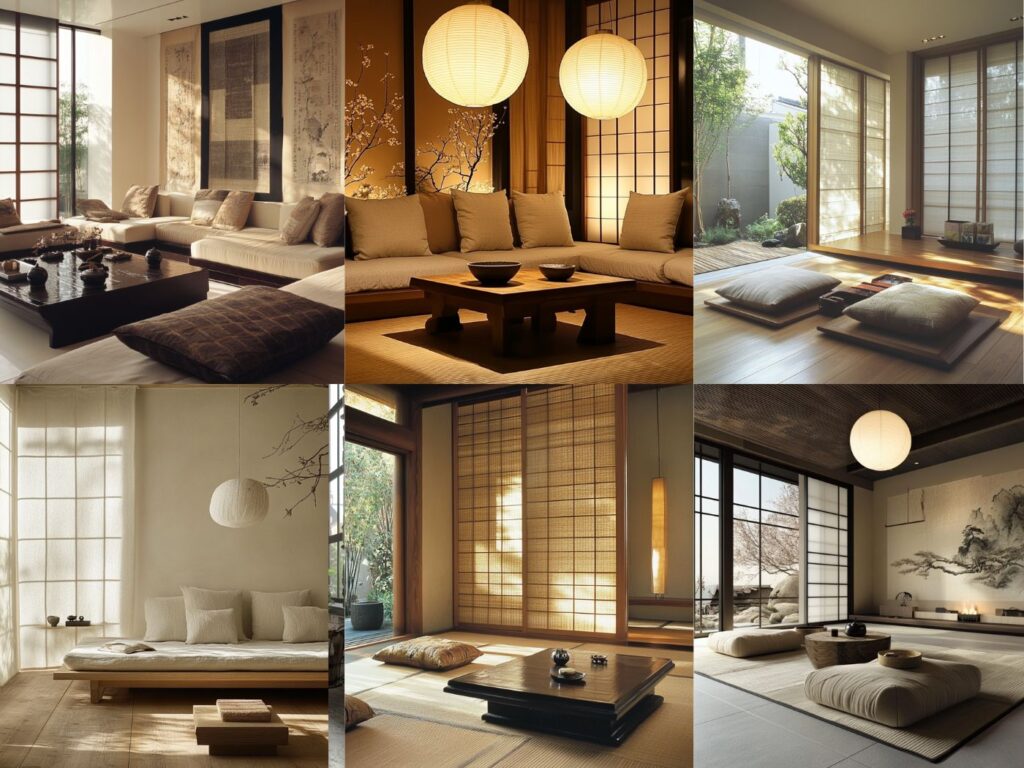Transforming your living space into a serene Japanese-inspired oasis can feel like a daunting task, but it doesn’t have to be. You may well be yearning for a calm retreat that beautifully balances aesthetics and functionality. Japanese design principles emphasize simplicity, natural materials, and a connection to nature, making it a perfect choice for creating a peaceful environment in your home.
In this article, you’ll discover a variety of Japanese living room ideas that cater to your desire for tranquility while reflecting your personal style. From minimalist furniture arrangements to the artful incorporation of nature, these concepts will inspire you to curate a space that invites relaxation and harmony.
Let’s explore how to bring the essence of Japan into your living room, turning it into a sanctuary you’ll love coming home to.
10 Japanese Living Room Ideas: Create a Tranquil and Minimalist Space with Natural Elements
#1. Japanese Living Room Bench
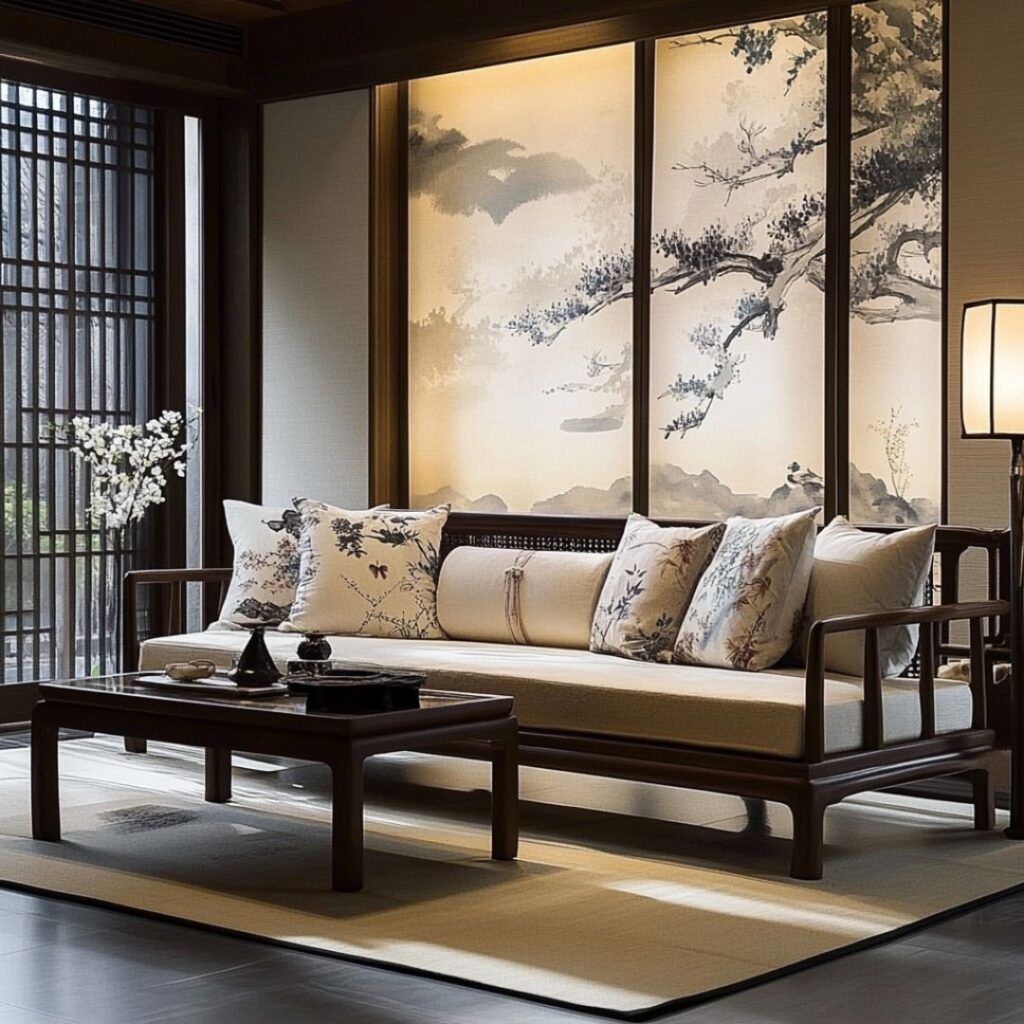
#2. Japanese Living Room Idea
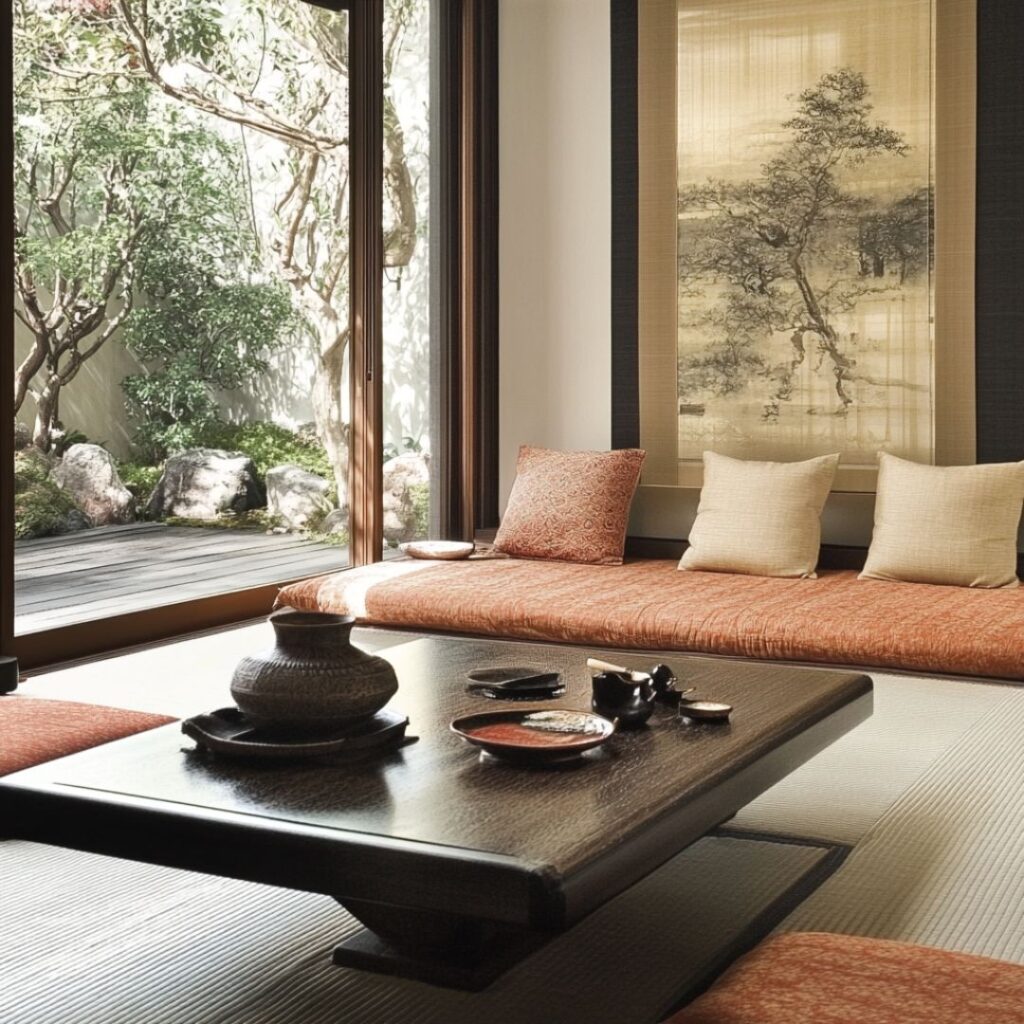
#3. Japanese Living Room Tokonoma

#4. Japanese Living Room With Flowery Zabuton
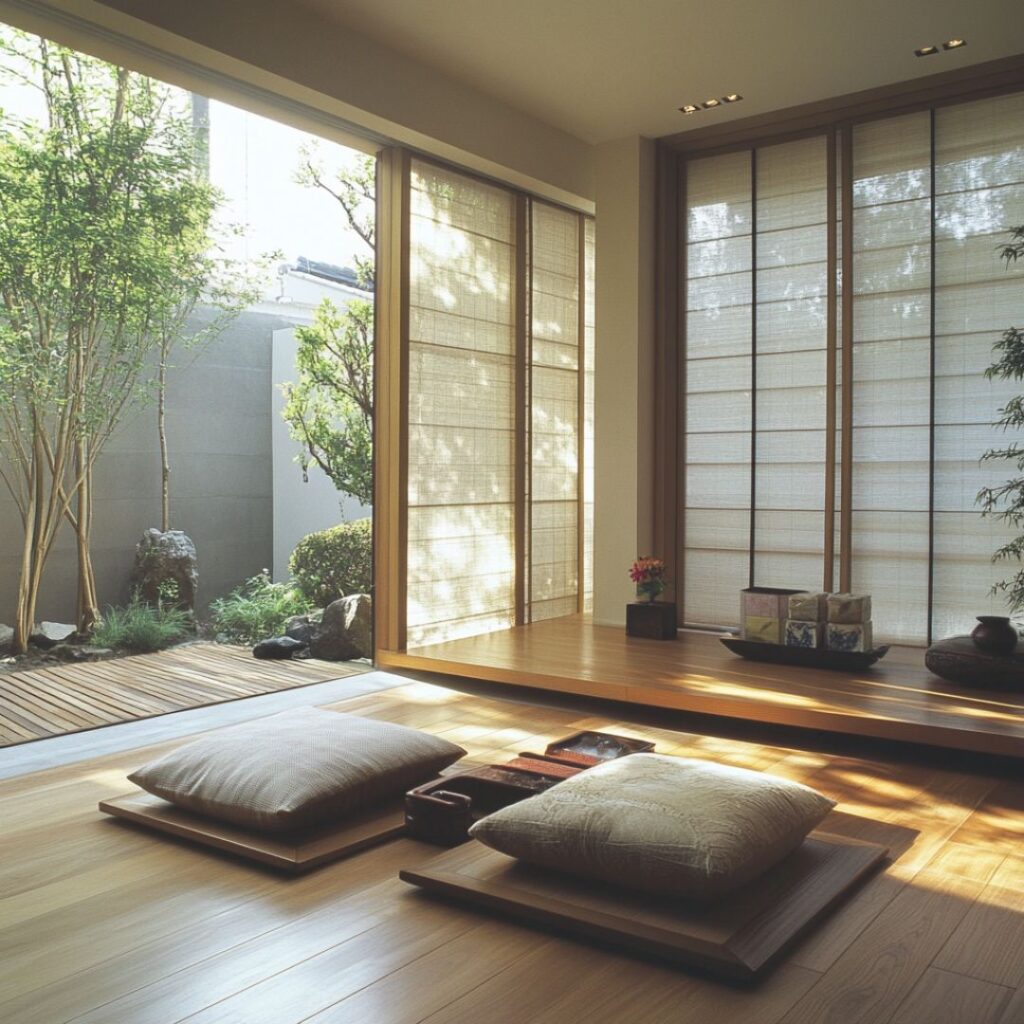
#5. Japanese Living Room With Minimalist Furniture
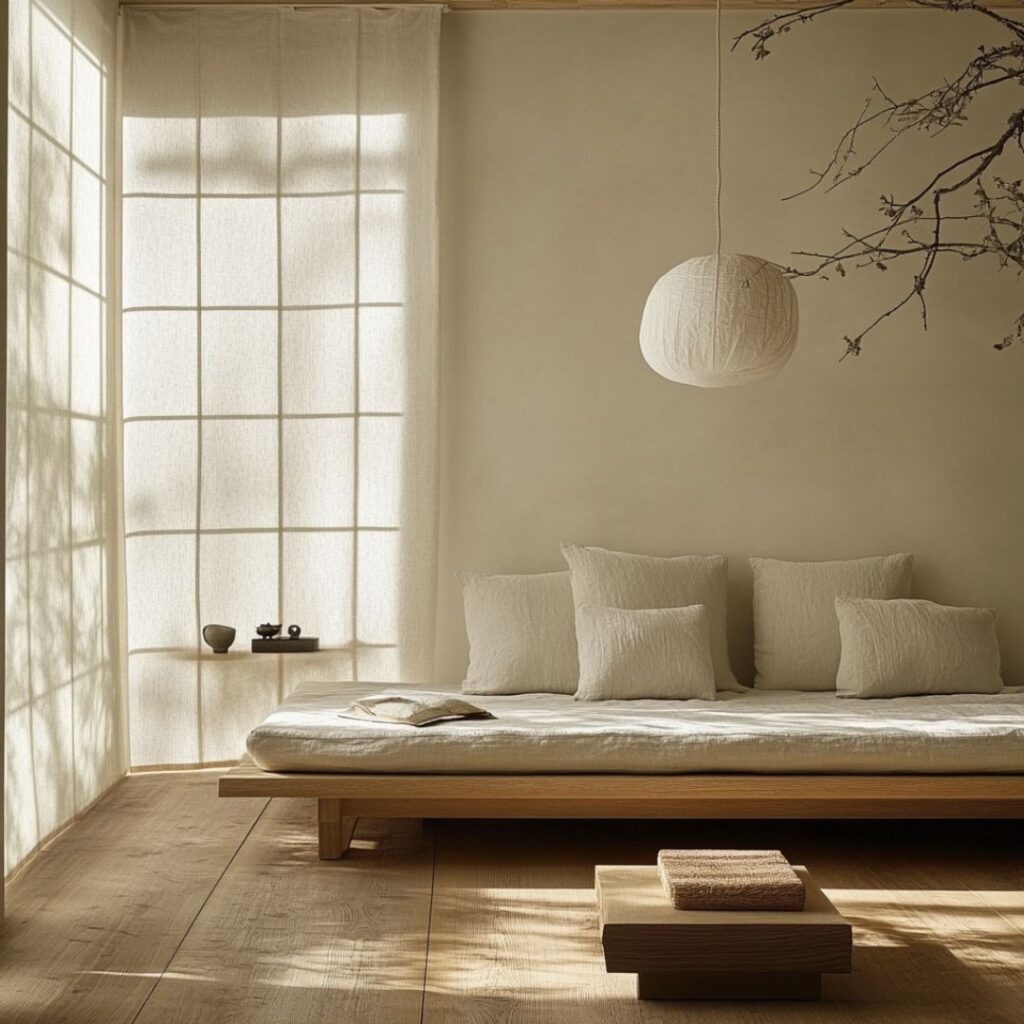
#6. Japanese Living Room With Neutral Colors
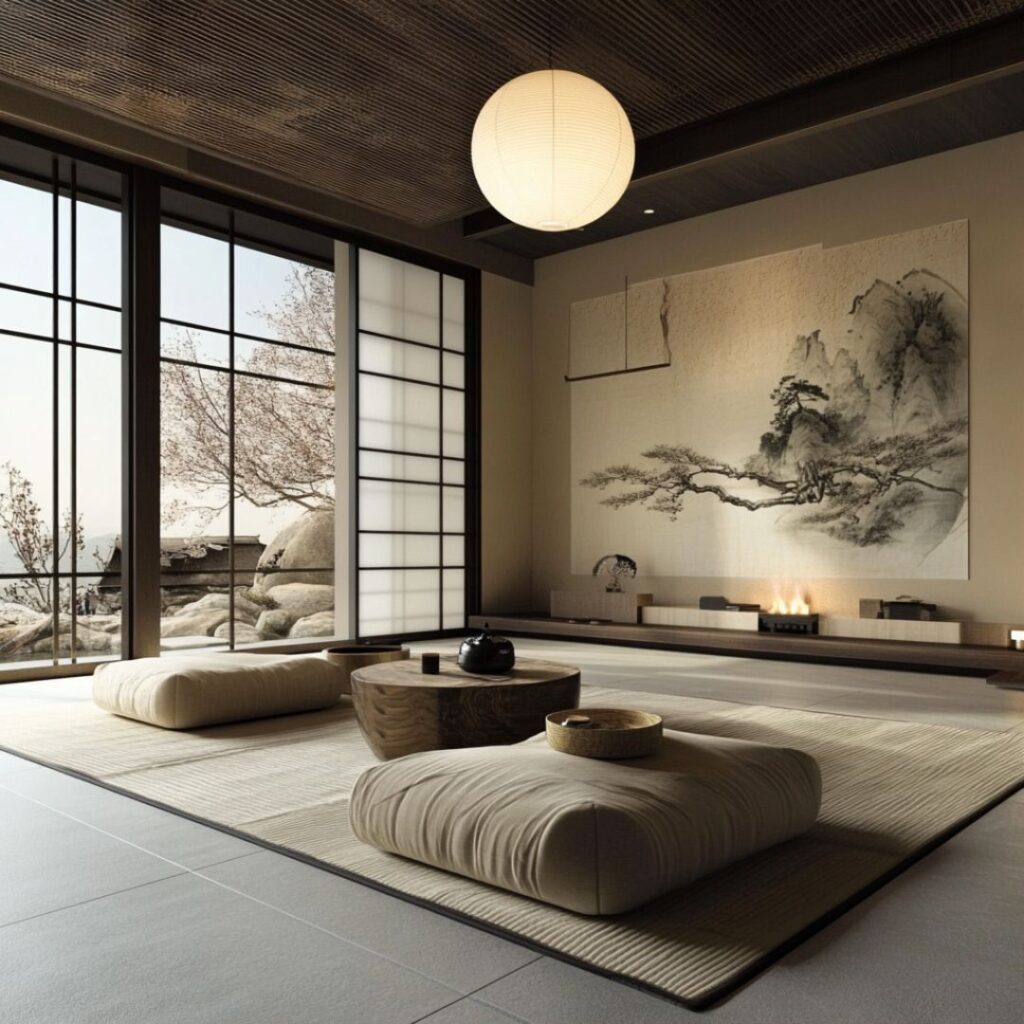
#7. Japanese Living Room with Paper Lanterns

#8. Japanese Living Room With Shoji Screens

#9. Japanese Living Room Zabuton

#10. Japanese Living Room

Japanese Living Room Decor Ideas
Japanese living room decor emphasizes simplicity and tranquility, a principle also central to japandi living room ideas. Use a neutral color palette, including browns, greens, and greys, for a calming atmosphere. Natural hues from wood and plants help achieve this serene environment, similar to the concepts found in zen living room ideas.
Select low, modern furniture for a clean look. Floor cushions and kokatsu (heated tables) provide traditional touches while offering comfort. Consider multifunctional furniture with built-in storage to maintain an uncluttered space, a design approach often seen in Scandinavian living room ideas.
Maximize natural light with large windows and skylights. Incorporate natural materials like wood, bamboo, and plants to bring the outdoors in. Traditional elements like shoji screens and tatami mats enhance the overall aesthetic while promoting a sense of harmony.
Key Elements of Japanese Design
Japanese design emphasizes simplicity and a serene atmosphere. By incorporating essential elements, you can create a tranquil living space that reflects this aesthetic.
Minimalism
Minimalism defines Japanese living rooms with uncluttered spaces. You display few decorative items, choosing instead to focus on clean lines and simple forms. This approach fosters an environment that promotes relaxation.
Natural Materials
Natural materials play a vital role in Japanese design. Use wood for tatami mats and low-profile furniture, complementing it with stone and paper accents like washi lamps. Incorporate natural fibers like jute or sisal for rugs, and add bamboo for finishes and decorations.
Color Palette and Aesthetics
Japanese living rooms often showcase a harmonious integration of colors and materials to create an inviting atmosphere. A focus on simplicity and tranquility through color choices enhances the overall aesthetic.
Earthy Tones
Natural materials play a significant role in achieving earthy tones. Wood, stone, and rattan introduce warmth while promoting a sense of calm. Incorporate warm browns, soft tans, and muted greens through furniture and textiles to establish a grounded and peaceful space.
Accent Colors
Accent colors add personality and visual interest to your living room. Use muted blues, pastel pinks, and greens sparingly in decorative items, artwork, and textiles. These touches elevate the overall design while maintaining a serene environment, aligning with the principles found in minimalist living room ideas.
Furniture Selection
Selecting furniture plays a crucial role in achieving a Japanese living room that embodies simplicity and serenity.
Traditional Pieces
Tatami mats add warmth while providing a textured element to the floor. Incorporating shoji screens allows light to flow into the space, enhancing the tranquil atmosphere.
Futon beds, designed for easy storage, maximize space during the day, creating flexibility for your living area. Minimalistic furniture, like low tables and floor cushions, fosters relaxation and calm.
Modern Adaptations
Open layouts are vital for encouraging natural flow within your space. Arranging furniture along 2-3 walls optimizes room functionality while maintaining an uncluttered aesthetic.
Using sleek, contemporary furniture pieces alongside traditional elements creates a harmonious blend. Earthy tones can complement modern designs, contributing to an inviting and restful environment.
Decor and Accessories
Selecting decor and accessories in a Japanese living room relies on simplicity and functionality. Focus on creating a cohesive, tranquil environment with pieces that enhance your space.
Artwork and Crafts
Choose artwork that reflects nature, such as landscapes or floral motifs. Opt for handmade crafts that embody traditional Japanese techniques, like origami or pottery, to add personal touches that resonate with minimalist aesthetics.
Plants and Greenery
Incorporate indoor plants to infuse vitality into your living room. Select low-maintenance options, such as bonsai trees or bamboo, which complement the overall serene vibe while enhancing air quality.

